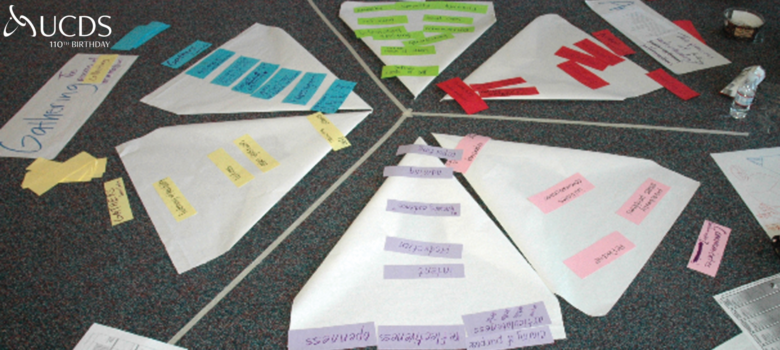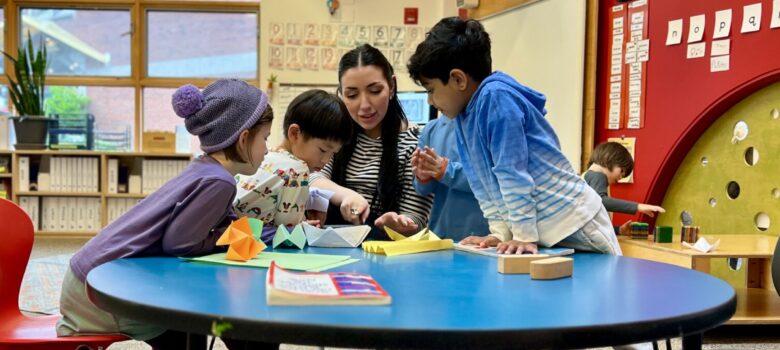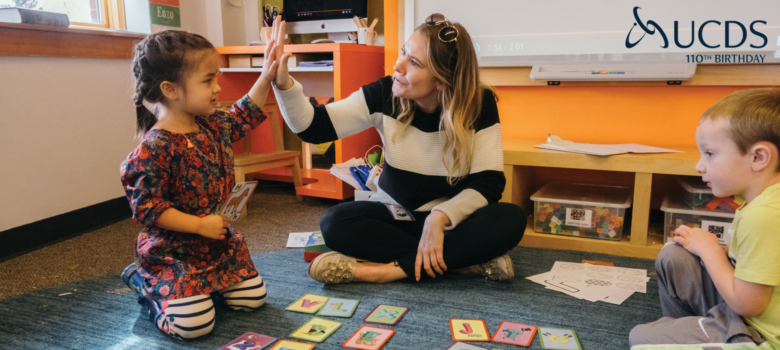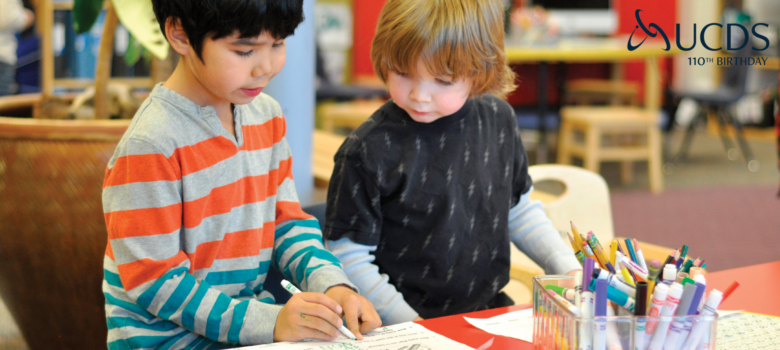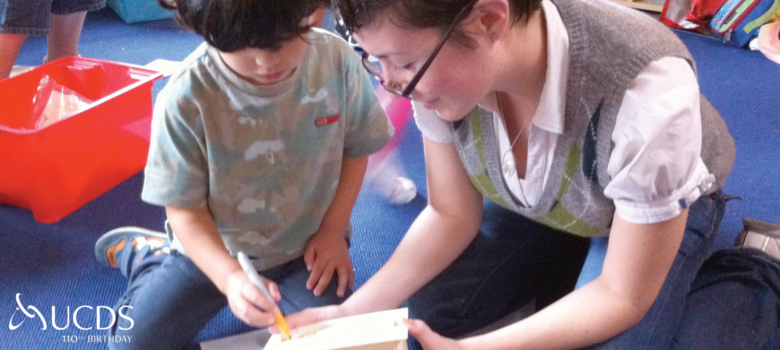UCDS is having a birthday! As we celebrate our 110th year, we are rolling back the clock and re-sharing six highlights of an innovative school: Culture of Inquiry, Sticky Curriculum, Authentic Assessment, Teacher Mentorship through Collaboration, Coaching Independence, and Being Brave. Over the next six weeks, we’ll revisit some in-depth reflections from UCDS Spark Magazine. You can also read full archived content of Spark Magazine at: https://issuu.com/ucds
Thinking About Thinking
by Susan Foley and Gretchen Morse
UCDS Spark
Issue #12, Winter 2013
“Success is a journey not a destination. The doing is usually more important than the outcome.”
Arthur Ashe
At UCDS we purposely choose the forms of assessment that best serve our students and teachers. Over the years we have researched, gathered and created a variety of assessment tools and practices that guide how and what we teach. UCDS teachers carefully choose and create assessments that not only give us information about a child’s academic performance but also provide insight into a child’s thinking process. In particular, we know that when students reflect on their own thinking they become successful independent learners. Through reflection on one’s own thinking process, an individual practices learning how to learn. In turn, each student develops independence and the ability to generalize his or her thinking strategies to other problem-solving scenarios. In fact, we consider these reflective skills to constitute the core of our program, providing a platform on which academic growth occurs.
Our curriculum is built from a continuum of skills (benchmarks) that describe how we generally expect students to acquire academic abilities. We acknowledge that academic growth is not always a linear process, and the continua documents allow teachers to note where a child’s abilities currently lie without being constrained by his or her age or grade. These are living documents that we regularly review. Throughout the process of examining our reading, writing, and math continua, we sparked discussions about the problem solving skills that surround academic abilities. These skills seemed to fall under the bigger umbrella of Critical Thinking. As we considered the ways students communicate their understanding, approach and method to solve problems, we decided that these abilities were not unique to one academic content area. And so, with that realization, we were ready to embark on creating a continuum that would give a picture of each child’s Critical Thinking abilities.
Our original plan was to create a fourth continuum, modeled after the reading, writing and math continua we were already using. We didn’t realize at the start just how long, complex and valuable this journey was going to be. We wanted this continuum to go beyond the list of skills and concepts that were carefully teased out in the other documents. Our ambition was to create a multi-dimensional tool not only to assess a child’s thinking but also to assess the process of thinking. We devoted many of our in-service days over the next two years to thinking about thinking. The school worked with the staff of ILABS, University of Washington’s Institute for Learning and Brain Sciences, to begin the process of looking deeper at our own practices in light of the exciting, emerging research in the field of neuroscience. Small teams of teachers traveled to attend workshops hosted by Mel Levine, John Ratey, Ron Richhart and the Foundation for Critical Thinking. Upon returning from such workshops, these teachers led the staff in discussions to further understand the thinking process. We filmed students solving puzzles and interviewed them about their processes. As a staff we reviewed and reflected on these videos. We repeated this exercise with teachers working through puzzles and problems. We invited researchers and leaders in the field to visit our school and add their perspectives and knowledge to our discussions. These visitors included Robert and Michelle Root-Bernstein, Ellen Winner, Jennifer Amsterlaw, Ron Richhart, Mihaly Csikszentmihalyi and John Ratey. We also broke into small groups to read about and share a variety of teaching philosophies including Bloom, Vygotsky, Dewey, Waldorf, Piaget, Montessori, Reggio-Emilia and Levine. These activities helped the faculty create shared language and informed our ongoing discussions. We explored and tested a few versions of the UCDS Critical Thinking Continuum over the next few years.
One surprising decision that we arrived at was that a Critical Thinking continuum was not serving the purposes we hoped it would. The language seemed to emphasize science and math rather than fitting all domains and the layout implied that the document was tracking linear skills that to us seemed better described as learning traits or habits of mind. We came to the conclusion that one continuum would not suffice. We needed to add information about thinking processes to each of the existing continua (reading, writing and math) to illustrate how an individual’s thinking and problem solving was often dependent on that specific domain. For example, one child may consistently explain his or her thinking when solving a math problem, but may not do this in a literature group discussion. Having a place on each continuum to document thinking in a specific domain gave a more thorough picture of each student.
Although including descriptors of a student’s thinking process in each academic continuum deepened the way we used these assessment tools, faculty still believed that providing additional information about a student’s Reflective Thinking with peers and in the community could valuably document how a child’s social/emotional skills are growing. To this end, faculty began developing a resource to describe Reflective Thinking, which is a snapshot of how a student interacts with the community and approaches situations where problems need to be solved. In order to support this valuable part of our curriculum, we decided to re-envision the fourth planned continuum as the UCDS Reflective Thinking Profile. This description is a profile because it provides a snapshot in time of a student’s communication and collaboration style. From year-to-year, these snapshots are an ongoing source of data on how a student is developing as a learner and community member. In addition, this document acts as a guide for teachers as we continually coach students on how to practice and implement these essential skills.
The continua and Reflective Thinking Profile are used to assess and track a child’s growth and are considered living documents. As a faculty we examine these documents regularly, discuss their effectiveness and adjust them to reflect what we value and teach. The useful documents that result from these cooperative efforts are appreciated by all, but by far the most value comes from what we gain taking the journey together. By undertaking this process, it gives us time to delve into theories about learning and thinking and more clearly define what we want to coach and assess in our everyday teaching.

